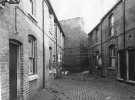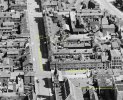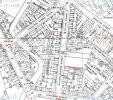Hello, I'm writing a family history and while I have the genealogy well under control, I'd like to know a bit more about where my family lived in Birmingham. In 1867 there were living at 10 Court, St Martin Street but by the 1871 census were No 1, 8 Court, William Edward Street, where they stayed until emigrating to New Zealand in 1874. I've had a good read of the memories shared on this forum about back-to-backs and that's been very helpful. I've also got the 1868 list of businesses in William Edward St and know that the Vaughton Works, a metal bedstead manufactory owned by James Tombs, was adjacent to Court 8.
My g-g grandfather was a carpenter who worked for George Ravenscroft of 41 Gooch St, where he also had a publican's licence.
Any ideas about what that part of the city was like at the time would be welcome. My people were very 'ordinary' so I'm attempting to give them context where I can. Many thanks in advance for your help.
My g-g grandfather was a carpenter who worked for George Ravenscroft of 41 Gooch St, where he also had a publican's licence.
Any ideas about what that part of the city was like at the time would be welcome. My people were very 'ordinary' so I'm attempting to give them context where I can. Many thanks in advance for your help.









